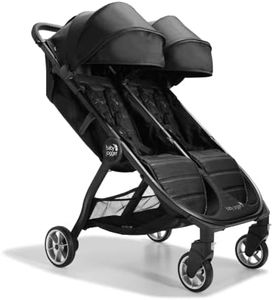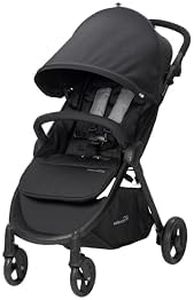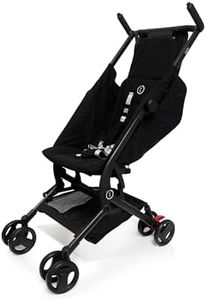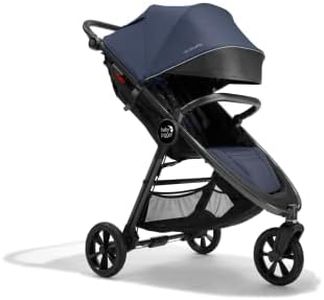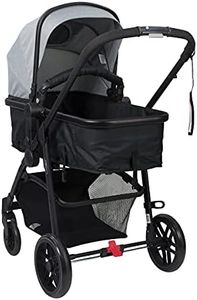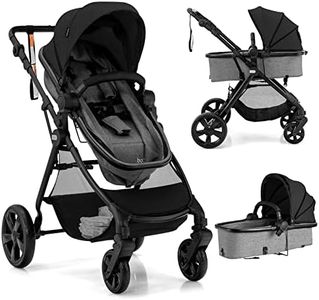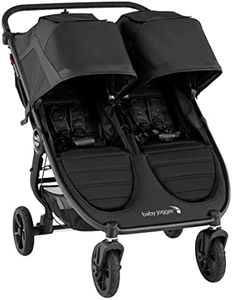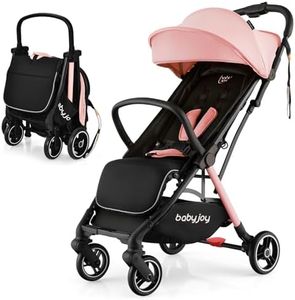We Use CookiesWe use cookies to enhance the security, performance,
functionality and for analytical and promotional activities. By continuing to browse this site you
are agreeing to our privacy policy
10 Best Strollers
From leading brands and best sellers available on the web.By clicking on a link to a third party's website, log data is shared with that third party.
Buying Guide for the Best Strollers
Choosing the right stroller is an important decision for parents and caregivers, as it's a piece of gear you'll likely use every day, sometimes for years. The best stroller for you depends on how and where you'll use it, your lifestyle, the age and size of your child, and how easy you want transporting and storing the stroller to be. Carefully consider your daily routines, typical environments (urban, suburban, rural), and what features matter most for your comfort and convenience. Remember, what works for one family may not be the perfect fit for another, so focus on your unique needs.Stroller TypeStroller type refers to the overall design and intended use of the stroller, such as full-size, lightweight/umbrella, jogging, travel system, or double/multiple strollers. This is important because different types are suited for different activities: full-size for daily use and comfort, umbrella for portability, jogging for active parents, travel systems for easy car-to-stroller transitions, and double or multi-seat for more than one child. To navigate, think about where and how you'll use the stroller most often—city sidewalks demand different features than jogging trails. Pick a stroller type that matches your daily needs and family situation, as this will have the biggest impact on your satisfaction.
Weight and PortabilityWeight and portability indicate how easy the stroller is to carry, lift, and store. Lightweight strollers are easier to take in and out of cars or public transport, while heavier models might offer more features but be harder to move around. Divide them roughly into lightweight (under 15 pounds), midweight, and heavier (over 25 pounds) options. If you're often traveling, using public transit, or have limited storage space, prioritize a lighter and more foldable model. If portability isn't crucial, a heavier stroller with more storage and features might suit your needs better.
Fold MechanismThe fold mechanism is how the stroller collapses for transport or storage. This matters because you'll likely be folding and unfolding the stroller frequently, sometimes with a child in one arm. Some strollers offer a 'one-hand fold' for quick, convenient collapsing, while others may require multiple steps. There are compact folds for smaller spaces and more straightforward folds for ease of use. Consider how often you'll need to fold the stroller and whether you'll be carrying it while juggling other tasks or children—choose a fold style that matches your convenience needs.
Wheel Type and SuspensionWheel type and suspension affect how smoothly the stroller rides, especially over uneven surfaces. Larger air-filled tires and suspension systems are best for rough terrain and active use, like jogging or rural walks, while smaller, plastic wheels are lighter and better for city sidewalks and malls. Jogging strollers usually have three larger wheels with enhanced suspension, regular strollers use four smaller ones. Think about where you'll use the stroller most: for urban environments, smaller wheels are fine; for outdoor use or running, opt for larger wheels and better suspension.
Seat Recline and ComfortSeat recline refers to how much the backrest can adjust to different angles. A full recline is essential for newborns who need to lie almost flat, while older babies and toddlers might only need an upright or slightly angled seat. Comfort features also include padded seats, adjustable leg rests, and breathable materials. If your child will nap frequently in the stroller or you're using it from birth, prioritize a full recline and additional comfort features. For short outings or older kids, less adjustability may be sufficient.
Storage OptionsStorage covers the under-seat basket, pockets, and trays available for your belongings. Larger baskets are helpful for carrying diaper bags, groceries, or extra gear, while smaller compartments can hold snacks or phones. If you plan longer outings, need to carry supplies, or use the stroller for errands, a generous and easy-to-access basket is a big plus. For short, light use, minimal storage might suffice.
Car Seat CompatibilityCar seat compatibility refers to whether a stroller can accept infant car seats, either with adapters or as part of a travel system. This is important for transferring newborns from car to stroller without waking them. Some strollers are sold as travel systems, others require additional adapters. If you want to use the stroller from birth or regularly move your baby between car and stroller, ensure compatibility with your chosen car seat brand and model.
Adjustable HandlebarAn adjustable handlebar can move up or down to suit caregivers of different heights, making the stroller more comfortable to push. If multiple adults will use the stroller, especially if there's a significant height difference between them, an adjustable handlebar helps prevent discomfort or strain. If this is not a concern for your family, a fixed handlebar may be fine.


